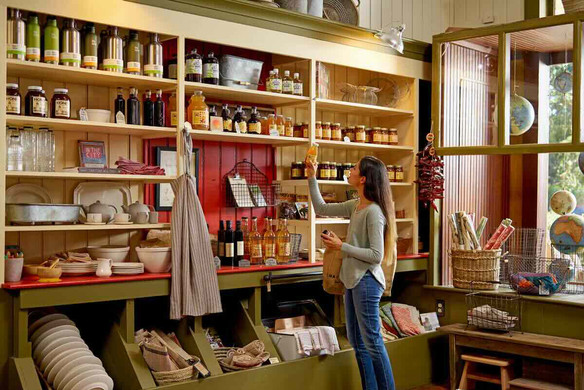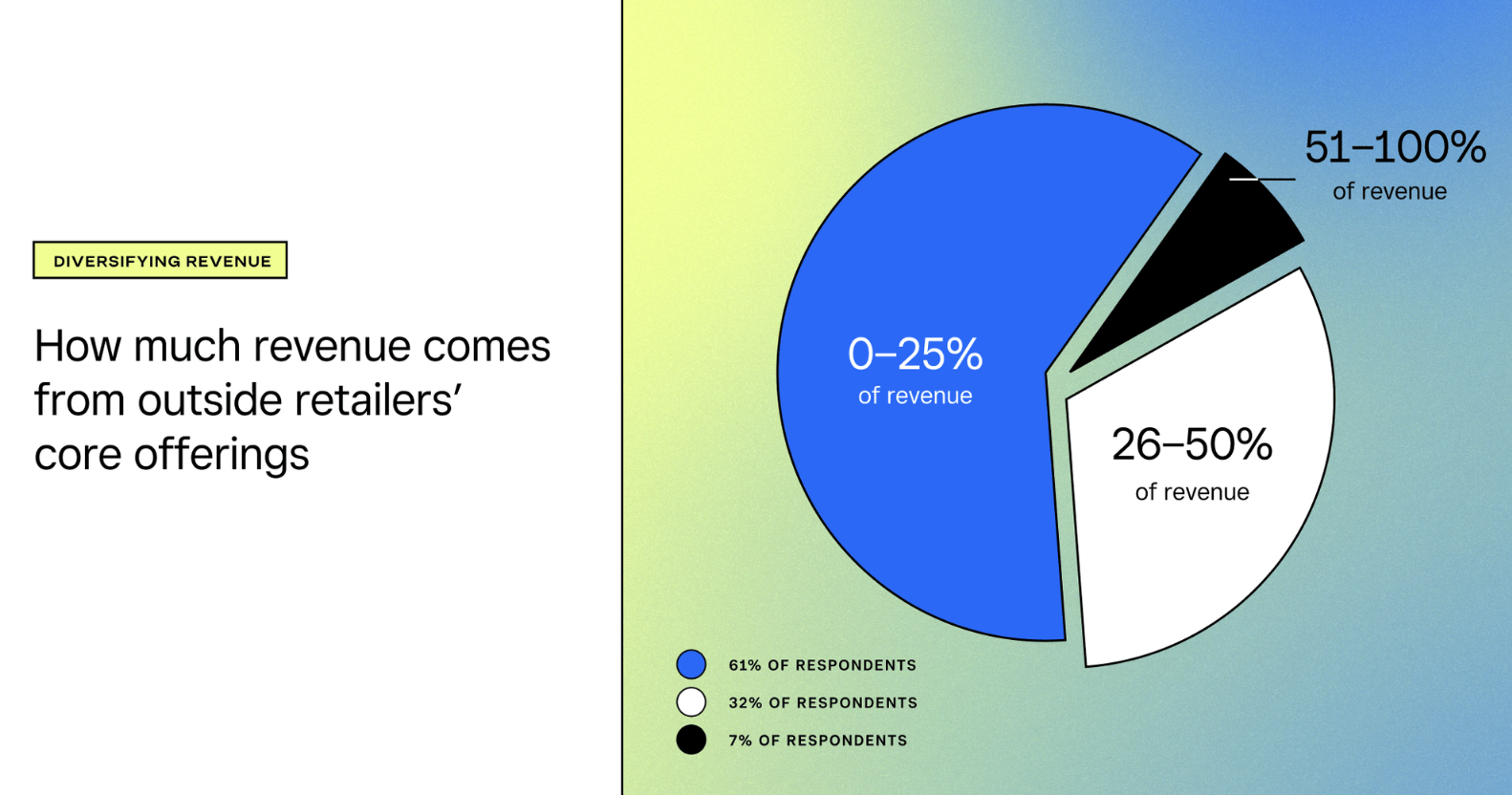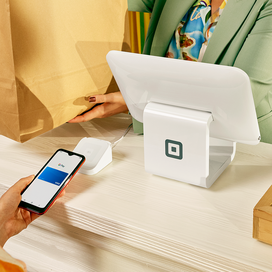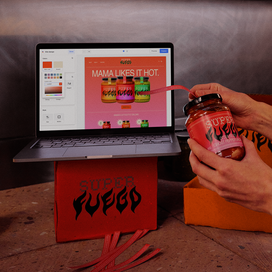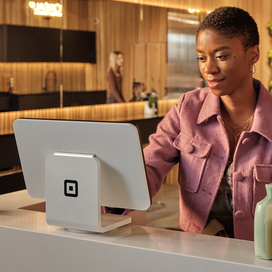Table of contents
In-store shopping is making a comeback. Yes, a flawless eCommerce experience will always remain a must. But the Square Future of Retail research shows that retailers experienced a drop in their online income as shoppers return to store aisles. In 2022, retailers reported that online sales made up an average of 43% of their overall revenue. That number fell to 34% in 2023 as shoppers returned to stores. In 2022, experiential media company Mood Media reported that 71% of consumers worldwide now shop in physical stores as often or even more often than before the pandemic.
But customers are looking for more than just grabbing items off the shelves; they crave meaningful in-store experiences that help them connect with brands. In addition, shoppers are adventurous and open to trying new things, especially when they’re in-store. Square research found that 80% of customers are somewhat interested in trying a new type of offering at a business known for something else, while 40% are very interested.
And if you need ideas on where to start, retail consumers say they’re most likely to visit stores in person if the following are offered: exclusive in-store loyalty program perks (61%), dining options like a coffee or wine bar (48%), and interactive displays, kiosks, or activities (29%).
So you can understand why savvy retailers are leaning into experiential retail strategies to make shopping more memorable for customers. In fact, 38% of retailers say they plan on offering more in-store events and shopping experiences to stay competitive. You too can leverage experiential retail to get foot traffic in your store while exploring multihyphenate offerings to diversify revenue. Here’s what you need to know to get started:
What is experiential retail?
Experiential retail typically means creating immersive and memorable customer experiences within physical retail spaces. Rather than focusing solely on the transactional parts of a traditional retail experience, a focus on experiential retail takes it up a notch by engaging customers emotionally, stimulating their senses, and encouraging interaction.
For example, a sporting goods store might just line products on shelves like a traditional retail store. But that same store can become an immersive destination for fitness enthusiasts. Customers entering the store could be greeted by vibrant digital displays flaunting the latest gear, athlete endorsements, and inspiring fitness stories. The store layout might encourage exploration, with sections for different sports like running, yoga, and weightlifting. Customers could take advantage of virtual reality fitting rooms where they can see themselves wearing different outfits in various virtual environments, from city streets to scenic landscapes. Trained staff would use high-tech body scanning to help customers find their ideal size and style.
But experiential retail is not just about what happens in person. The experience should extend well beyond the confines of your retail store. By leveraging technology, you can create an omnichannel shopping experience that drives online shoppers in-store and vice versa while providing an engaging and memorable experience. At a basic level, this means making it as easy as possible for customers to order and get your products in their hands — whether that’s buy online, pick up in-store, curbside pickup, or in-store fulfillment.
The sporting goods store, for example, can offer try-on tools on its website, allowing customers to virtually try on clothing and accessories from the comfort of their homes. This online experience can seamlessly transition to an in-store visit if customers want to try on the products physically before making a purchase.
We get people who are like, ‘Can I just come to the tea bar?’ And we’re like, ‘Yeah, come on in.’ We’re building relationships with these people and little by little educating them, and they become open to the other things that we offer.”
LaToyia → Founder, The Laya Center
The goal is to foster deeper connections with your customers, differentiate your store from competitors, and turn your customers into loyal fans .
And here’s the cherry on top: Experiential retail experiences are like gifts that keep giving. They’re perfect for sparking user-generated content and creating a social media buzz that puts your brand in the spotlight.
Why the shift to experiential retail?
Several factors contribute to the growing importance of experiential retail for consumers:
- Shift in consumer preferences: Experiences are the new black, especially for millennials and Gen Z. Half of millennials prefer to spend on experiences rather than material possessions. And they are willing to pay more for them.
- Demand for personalization and customization: Today’s consumers expect personalized and tailored experiences catering to their preferences and needs. No more generic, one-size-fits-all approaches — these savvy shoppers want the VIP treatment and are not afraid to demand it.
- Competition from eCommerce: The rise of eCommerce has transformed the retail industry, offering convenience and accessibility to consumers at the click of a button. To keep driving customers in-store, physical retailers must provide unique and compelling experiences that cannot be replicated online.
How to increase foot traffic in retail stores
If you’re considering experiential retail, there are many ways to boost foot traffic in your retail store by creating engaging and memorable customer interactions. Here are just a few experiential retail examples to try:
Host in-store events.
Whether it’s a product launch party, a live demonstration, or a hands-on workshop, offering exclusive events can generate buzz and excitement around your store, encouraging people to visit.
Let’s say you’re a kitchenware retailer. You can offer cooking classes or knife skills workshops by professional chefs. Provide all necessary materials and equipment, and encourage participants to get involved and ask questions. Then, offer special discounts or exclusive promotions on featured products during the event to incentivize purchases.
Craft irresistible store experiences.
Designing your store layout to encourage interaction and exploration can pique the interest of passersby and entice them to step inside. How about an eye-catching interactive window display? For a clothing store, the touchscreen display can showcase the latest fashion trends, outfit inspiration, and styling tips, inviting passersby to interact and explore.
Inside your store, you can create a themed environment that transports customers into a different world related to your brand or product. Use sensory elements such as lighting, sound, scent, and tactile textures to enhance the immersive experience and evoke emotional responses.
If space permits, consider adding outdoor seating or gathering spaces near your storefront. This creates a welcoming environment where people can relax, socialize, and observe the activities happening inside your store. According to Mood Media’s research, the third-most cited reason for visiting physical stores is the leisurely enjoyment of shopping with friends and family. So find ways to make shopping an absolute pleasure for prospective customers, starting from your storefront.
Turn your store into a destination customers can’t resist
Download your free copy of the Future of Retail report to learn how to make your in-store shopping experience more memorable for every shopper who walks through your doors.
Get the reportCreate shareable moments for social media.
Design elements within your store that are visually appealing and shareable on social media platforms. Encourage customers to capture and share their experiences online by incorporating Instagrammable photo opportunities, unique backdrops, or branded hashtags.
Picture this: a footwear retailer puts up a striking display at the entrance of their store featuring a larger-than-life sneaker sculpture made entirely of colorful shoelaces. Customers are invited to step into the display and pose for photos with the eye-catching sneaker in the background. Next to the display, a sign encourages customers to snap photos and share them on social media using a branded hashtag. To add a personal touch, the retailer could include a sign with fun prompts like “Show us your best sneaker selfie!” or “Strike a pose with your favorite kicks!”
Provide personalized services and consultations.
Offering personalized services such as styling consultations, product demonstrations, and expert advice can attract customers seeking personalized assistance and recommendations.
Imagine a customer walking into a beauty store and being greeted by friendly beauty consultants. As they browse the aisles, they notice a designated Beauty Studio area equipped with makeup stations, mirrors, and comfortable seating. The store’s beauty consultants are on hand to offer personalized styling consultations, helping the customer find the perfect products for their skin type, tone, and preferences. The customer feels valued and empowered to explore new products and techniques, fostering long-term loyalty and satisfaction with the brand.
To deliver personalized services effectively, consider appointment-based shopping and find ways to improve the try-before-you-buy experience.
Host community-focused events.
Organizing community-focused events such as fundraisers, charity drives, or local artist showcases can make your store a hub for social interaction and connection. For example, a bookstore can partner with a local charity organization to raise funds for a worthy cause. The fundraiser event can feature activities for the whole family, including book readings by local authors, live music performances, and arts and crafts stations for kids. This way, the bookstore becomes more than just a place to buy books — it becomes a vibrant hub for social engagement and cultural enrichment.
We bring in local food pop-ups and makers. Not only is it fun, but it brings in energy and new products. We love using our space to host events and collaborate with other local brands.”
Alvin Haruthunian → Operations Manager, Hi-Lo Liquor Market
Use technology to enhance the shopping experience.
Implementing augmented reality (AR) or virtual reality (VR) experiences, interactive displays, or mobile apps can provide immersive and interactive experiences that captivate customers and encourage them to spend more time in your store. You can create interactive product discovery stations where customers can explore and learn about your products in an engaging way. Use augmented reality (AR) technology to allow customers to virtually try on clothing, accessories, or makeup products before purchasing. And don’t forget about payments — implement mobile checkout and buy-now, pay-later (BNPL) options, especially if you’re looking to attract younger consumers. Older Gen Zers and millennials are more likely than any other age group to use BNPL options.
Offer incentives and rewards for visiting your store.
Providing incentives such as exclusive discounts, loyalty program rewards, or free samples for visiting your store can encourage customers to make the trip and explore what your store offers. You can host an exclusive in-store event and offer a special discount to customers who attend and make purchases during the event. To further sweeten the deal, these customers can earn redeemable loyalty points on future purchases, get free product samples, or receive personalized demonstrations. By offering tangible benefits for in-store visits, your customers will feel valued and appreciated for their patronage, making them more likely to return for future shopping trips — a win-win for both you and your customers.
“I think it’s so important to reward loyal customers … I want Cakeworthy customers who shop with us regularly to know that they are getting the best bang for their buck. And they love it — our loyalty customer percentage is higher than our non-loyalty percentage.””
Brandon Shedden → Owner, Cakeworthy
Make the most out of your retail foot traffic.
Once you’ve attracted customers to your store and they’ve made a visit, it’s essential to maintain that connection and keep them engaged even after they leave. The good news is that customers want you to keep in touch. Square research reveals that for 82% of global consumers, receiving communications from local businesses makes them feel more connected to the business.
During checkout or at various touchpoints throughout the store, encourage customers to provide their email addresses. With Square Marketing, you can segment your email list based on customer behavior or purchase history and send personalized emails. For example, you can create segments for first-time customers, frequent shoppers, or shoppers who attended a specific in-store event.
And don’t forget to stay active on social media. Fifty-two percent of consumers surveyed by Square have bought products directly from social media in the past month. Share engaging content, including product updates, behind-the-scenes glimpses, customer testimonials, and user-generated content.
Aim for an omnichannel experience that delights customers wherever they interact with your business, whether online or in-store. When customers stop by in-store, focus on creating a welcoming shopping environment that prioritizes their comfort and keeps them coming back for more.
![]()

